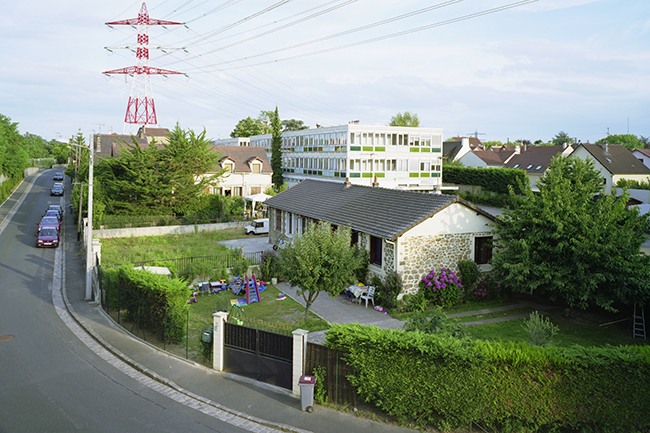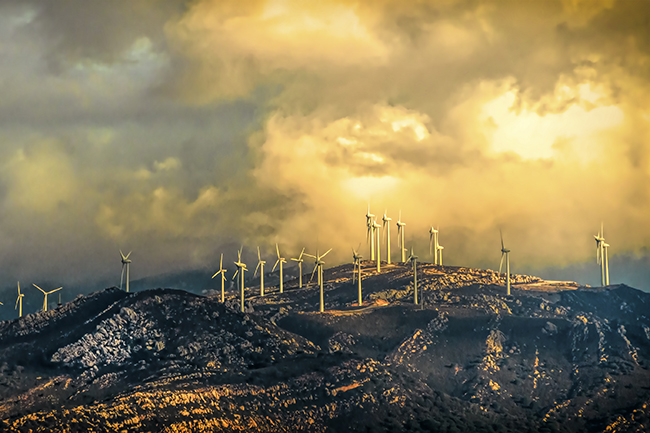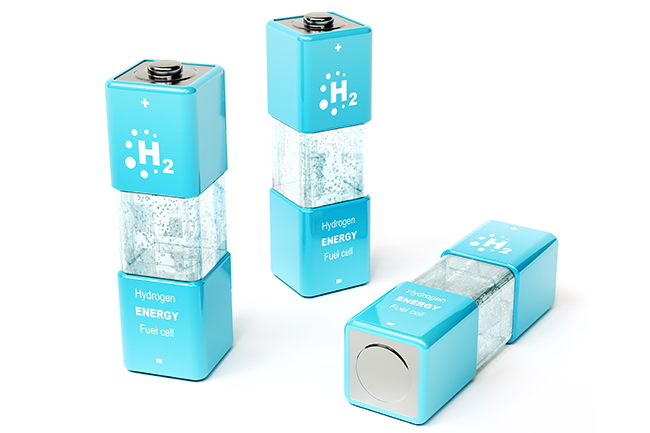

Preemraff in Lysekil, Sweden. Photo: Flickr.com / Lars Falkdalen Lindahl CC BY-SA
Swedish refinery at crossroads: 2X fossil future contested
The Preem oil refinery in Sweden wants to expand, greatly increasing its CO2 emissions and those of Sweden. It may wreck Sweden’s climate target. It may also help the Norwegian fossil industry’s effort to pitch CCS. What happens now is up to the government.
Preemraff is Sweden’s largest oil refinery, located in Lysekil on the west coast close to Norway. Preem is owned by the Saudi citizen Mohammed Hussein Al Amoudi. It also has a refinery in Gothenburg.
In 2016, Preem set up a project called ROCC, Residue Oil Conversion Complex. It foresaw a shrinking market for residual oil, due to IMO sulphur limits that will take effect in 2020. ROCC would greatly expand the throughput of oil.
The project would also double the CO2 emissions from around 1.7 to 3.4 million tonnes, jeopardizing the climate target for Sweden, which is net zero emissions of greenhouse gases by 2045. The “net zero” actually leaves some space for remaining emissions, to be compensated for by growing forests and CDM, so the real target is to cut territorial emissions by at least 85 percent from 1990, to 10.7 million tonnes of GHGs by 2045, including difficult areas such as methane and N2O from agriculture.
With ROCC added, Preemraff would emit 3.4 million tonnes.
But there is another side and another possible future for Preem. It has a substantial production of biofuels, mainly HVO diesel, and some gasoline from forestry etc. If Preem were to source all its production from renewables, it would be a major contributor to achieving the Swedish climate targets.
When the environmental court gave permission for the ROCC project in November 2018, the project sparked outrage from many groups, including the Swedish Society for Nature Conservation, because of the fossil lock-in and CO2 emissions.
The lower court did not take CO2 emissions into consideration, because of the ETS. Paragraph 26 of the 2003 EU Emission Trading Directive states that “the permit shall not include an emission limit value for direct emissions of” CO2.
If the ETS is seen as a closed system, a bubble, restrictions in one place will just result in more emissions somewhere else in Europe.
But that goes against the core of the Swedish environmental code:
“The purpose of this Code is to promote sustainable development which will assure a healthy and sound environment for present and future generations.”
And the ETS was conceived as a means to cut climate emissions, not as a way to wreck national climate policy. Also, the history of the ETS shows that it is not a closed system. It has been revised repeatedly, as the initial targets were unambitious and the trading prices collapsed 2007,
2012 and almost again in 2017. The reforms of the ETS have repeatedly pushed up the CO2 price, and new political moves will do so again.
An appeal to the supreme environmental court was granted in June 2019.
Aside from the judicial process, the Swedish Society for Nature Conservation asked the government to step in and take over, which the environmental code allows for. The Environmental Protection Agency filed a similar request.
“We want to bring to the government’s attention that this item may influence the possibility to reach Sweden’s climate targets,” the EPA wrote to the government on 27 June 2019. The government decided to do so in August.
So while the final outcome is uncertain, the project may possibly be stopped either by the government or by the higher court. It is also possible that Preem will decide not to proceed with the project.
The outcome is of strategic importance in two more respects: whether Sweden will use CCS (carbon capture and storage) as a climate measure and what kind of future there is for hydrogen.
CCS has so far played no role in emission reductions in Sweden, unlike Norway.
As a part of ROCC, Preem plans to send 5 million tonnes of CO2 for storage in Norway, by ship. This would be a first for Swedish CCS and a first for Norwegian CCS export, as well as a first for ship transport of CO2.
Equinor and Shell are working together on a rather grand scheme called Northern Lights, to store carbon dioxide from several European countries in the Aurora field in the North Sea, west of Bergen. But the site has not yet been decided. Test drilling in the Aurora field will start in late 2019, and it is not sure that it will deliver positive results.
Preem does not seem very worried about the cost of transporting the CO2, by ship, and for storing it. Nor should they. CCS is pivotal for Norwegian efforts to reconcile a growing gas and oil industry with green credibility, and the Norwegian government is ready to pay a lot of money for it.
With ROCC, Preem would be hooked up with the Norwegian fossil industry in two ways: they would get the gas to produce hydrogen from Norway, and they would store some of their CO2 in Norway.
Most of the ROCC project’s CO2 increase originates in hydrogen gas production from fossil gas. The hydrogen gas is used to crack the big hydrocarbon molecules and convert them into lighter, more hydrogen-rich compounds such as gasoline and diesel oil.
Preem aims to have the residue oil conversion complex working by 2025, which is now probably postponed by one or two years. Their bet on a future for oil and gas is for a longer term, at least throughout the 2030s, if not longer.
Given that time perspective, the choice of method to produce hydrogen is conspicuous. Another method is to split water with renewable electricity. The ore mining company LKAB and steel producer SSAB are working on a project to substitute coal and coke for electric hydrogen.
The HYBRIT3 project was launched in 2016, in collaboration with the power company Vattenfall.
HYBRIT is a very big project, and will consume about 15 TWh of electricity – 10 percent of Sweden’s production – and will produce much more hydrogen than ROCC.
The HYBRIT goal for full implementation is 2035. The prospects are getting better now than they were three years ago. At least 25 TWh of wind power will be added in 2018–2022 in Sweden and Norway.
HYBRIT and ROCC both target hydrogen but could not differ more in how and why. HYBRIT produces a renewable material (steel) with renewable energy. ROCC produces more fossil fuel (oil products) with more fossil fuel (gas).
Preem assumes that the global market for refined products will continue to grow for a long time. On that assumption, the war against climate change is lost.
The essence of the Paris treaty is a form of social control. Each nation is supposed to promise to do at least as much as its neighbours or peers and then keep its promises, or be named and shamed. This is not a zero-sum game. Sweden was a climate policy pioneer with its net-zero target, and is being followed by much bigger and more important nations, such as France and the UK. If Sweden backs down, it will make the whole Paris system weaker.
Another assumption behind ROCC is that the market for residue oil will drop sharply from 2020. This will not necessarily happen. On the supply side refineries can use more low-sulphur feed and less high-sulphur feed. On the demand side, there are alternative markets for residual oil, such as power plants or ships with desulphurization.
There are also alternative fuels: natural gas, biofuels, hydrogen and (for ferries) electricity. They may become important at the time ROCC would operate. There may not be a deluge of cheap surplus residue oil.
So ROCC may be a solution without much of a problem.
It should be noted that the ROCC project does not primarily aim to produce cleaner fuel for ships. The aim is to produce more petrol and more diesel, mainly for road traffic.
Preem had an earlier project (until about 2008) for squeezing out the last drops out of the residue oil with petroleum coke as residue. This is the exact opposite of what they are planning to do now.
What will happen with the residual oil if Preem does not hydrogenate it?
Some of it may end up as asphalt in concrete, and in that way slightly reduce the very CO2-intensive production of Portland cement. Some of it may become fuel, as an alternative to coal. If there is no market it will have to be solidified and stored indefinitely, which should be less difficult than CCS.
There is no way to predict what the oil market will look like in the 2030s.
But if commitment to the 1.5–2 degree target is for real, all long-term investment in the fossil fuel sector will have to stop soon.
Fredrik Lundberg
Sources:
https://www.iva.se/globalassets/info-trycksaker/vagval-for-klimatet/nr-5...
https://www.offshoreenergytoday.com/norways-oil-and-gas-production-to-in...

 Download this issue
Download this issue























